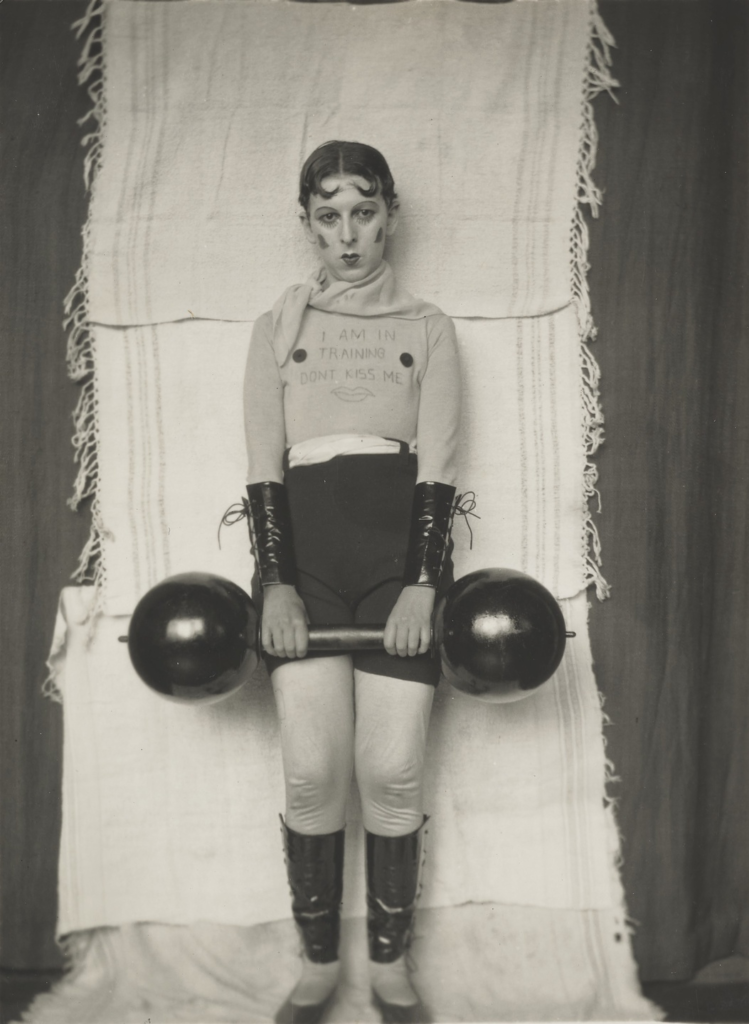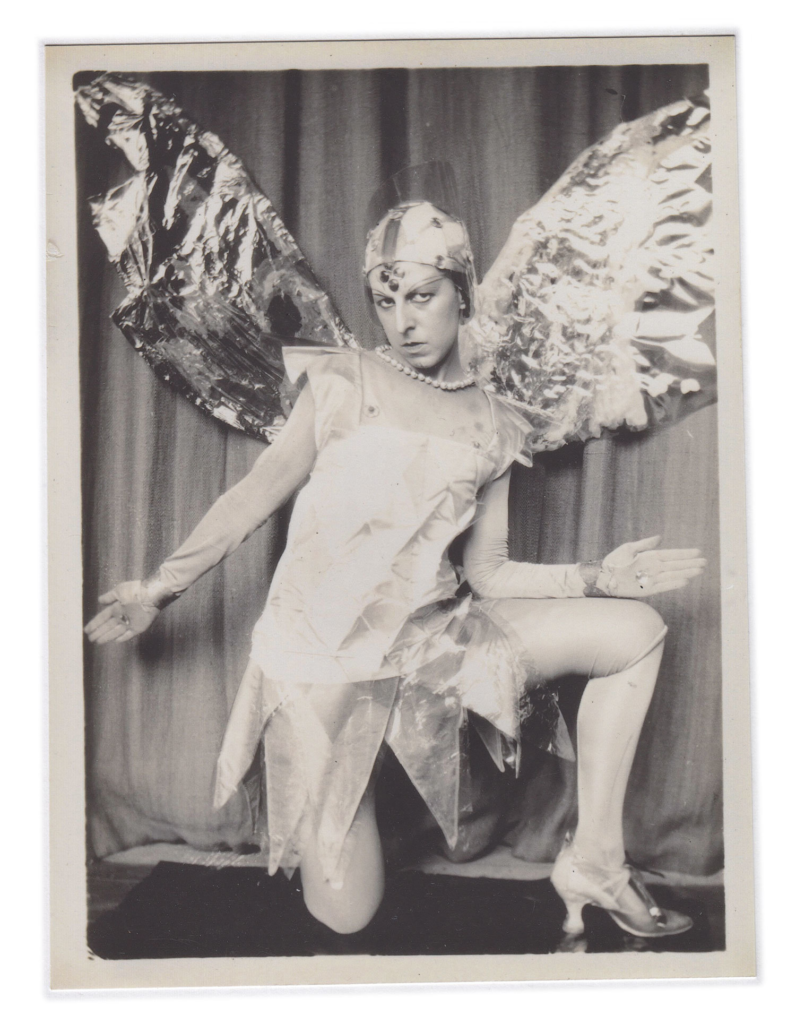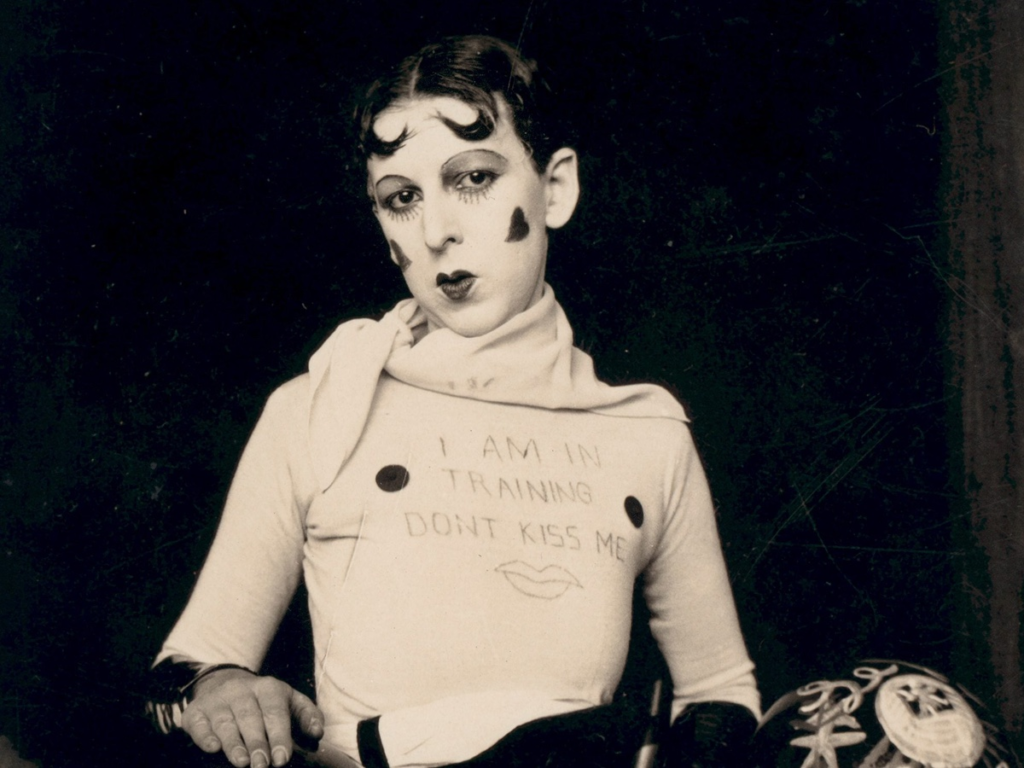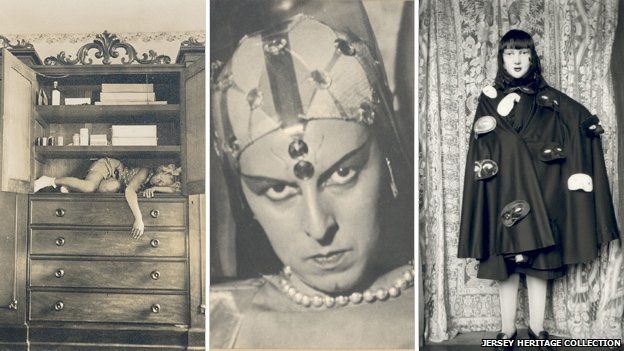Claude Cahun
‘Claude Cahun’ or originally ‘Lucy Renee Mathilde Schwob’ was a photographer, however she was also a French surrealist, a sculptor and a writer. The reason she decided to change her name is that the name ‘Claude’ can be used by either a woman or a man, which makes it gender-neutral and therefore inclusive to all. She died in 1954 however she was previously arrested and sentenced to death in 1944 along with her partner due to Jersey becoming liberated by the Germans in 1945. Claude was known to have suffered from anorexia and suicidal thoughts and a similar form of debilitating depression as her mother. Claude Cahun then met her lifelong partner Suzanne Malherbe, however, Cahun’s father ended up marrying Suzanne’s mother, which made the women step-sisters. However, this did not top them both and they moved to Paris in 1919. Due to the fact same-sex couples and gender neutrality was uncommon and frowned upon, Claude Cahun and Suzanne Malherbe joined with a small group of members of the avant-garde in Paris, this consisted of people who were also experimenting with gender in this period.





Cahun and Gender, Sexuality and Power
Cahun’s work is now seen in the modern day as truly inspirational due to her diverse lifestyle and slightly unusual personal life. These factors convey a figure of interest and fascination for many later artists. s. The gender-shifting self-presentation, and non-heterosexual relationship make Cahun important to homosexual activists and feminism lovers alike.
For example, one person who has truly been honored and fascinated by Claude Cahuns work is Gillian Wearing. Wearing and Claude Cahun were born many years apart and showed no relation or similar lifestyle. However the topic of photography, to explore themes around identity and gender through masquerade and performance links these two people together.
Gillian Wearing has done many projects in tribute to Claud, however the most popular and by far my favourite is her work on Me as Cahun Holding a Mask of My Face in 2012.

In this photographic self-portrait, Gillian recreates Cahun’s self-portrait from the I Am In Training Don’t Kiss Me series which Claude made in 1927. She did this by photographing her creation a mask that looks like Claude Cahun’s face in the series and then holding another mask to her right which is a replica of her own face.
Here Gillian Wearings interpretation is shown above, and Claude Cahun’s original is displayed below.

I particularly like this modern day interpretation as it pays attention to a talented human who thrived during difficult and dangerous times where expressing your true self and sharing your inner passions was seen as ‘different’ and ‘unusual’. Gillian’s recognition of Claude’s talent relights something of a poster girl for feminist art critics, who now praise Claude Cahun for blurring of gender and identity in such treacherous times.
“We’re only just catching up to her”
I really empathise and admire this quote from Gillian Wearing which explains how Claude Cahun was so ahead of her time. This is due to the fact so many contemporary artists are so influenced by her work. Claude has a dedicated following among artists and art historians when it comes to feminism and gender stereotypes.
Cindy Sherman



Cindy Sherman is an independent photographer who took photographs in the 70’s. Something I find particularly admiring, is how she she took her camera and pointed it at HERSELF, instead of photographing someone else. I find this very unique and actually brings more meaning and creativity to the photos she created. This gesture then became her signature thing and showed her strong views on gender and the construction of identity through key times when opinions and personalities where particularly changing in history. She also mad many different character that she would pretend to being her photos and experiment with makeup, hairstyles and costume to demonstrate these characters.
A QUOTE THAT I REALLY LIKE IS:
“None of the characters are me. They’re everything but me”.
I like this quote because It explains how she created over 70 of these images of herself, but not HERSELF, as she was acting and posing as other character using only her body but not her true inner self.
Cindy Sherman created around 70 Untitled Film Stills which consist of black and white images made between 1977 and 1980. I truly think Cindy Sherman’s work conveys a message of mystery and struggle with being a women. Her images inspire me to attempt to take photos like this in my next photoshoot.
Image Analysis

What did I notice first?
I noticed at first the negative expression on her face, she almost looks worried or scared about where she is or who she is with. This creates an element of mystery in the photograph as the person viewing it wants to know why she looks so troubled and scared about where she is.
What’s Happening in the Image?
The woman seems to be looking over her left shoulder towards behind where she is standing. She is also holding her stomach which may mean she is either shocked or worried about something that has just happened. She may also be holding her stomach with her right hand and arm wrapped around it. This may be to create a maternal approach which implies a sense of security and protection over something.
What people and objects are shown? How are they arranged?
In the image, there is a woman standing with an apron on and she is standing in front of a sink where there lies a bottle of dish soap and what seems to be a spice rack. I can also see a bottle of dish soap, a salt container and a pan or stovetop – like pot where the handle is facing towards her. All these things apply that she was possibly mid- washing up when she was disturbed by a possibly domestic figure.
What is the physical setting? Is place important? Are there details that suggest the time period this image relates to?
I think the place Is very important because It could possibly portray a ‘woman’s place’ in society at the time. Stood in the kitchen washing dishes is the idealistic place for a wife to be. This shows that the misogynistic and stereotypical traits of patriarchal views are shown throughout this photo. The photo was also taken in 1977, during this time women around the world were not given the chance to decide life for their own, this is shown through the clear differences between gender roes between women and men. Women in this period were viewed as inferior, weak, and dependant. They were expected to be responsible for the family and maintenance of the house.
What other details can you see?
I also think that the fact this photo is nameless also shows a factor of which stereotype this photo fits into. I think these photos are made to show movie industry lending a voyeuristic quality to this glimpse into the private life of a women in a potentially dangerous household, left alone with multiple responsibilities. The photo is names ‘Untitled Film Still’ This perfectly relates to my idea of the view of women in the society at this time and how Cindy Sherman was attempting to portray this. The fact the photo is nameless and therefore is ‘Untitled‘ shows the fact that women were, in fact, nameless and were seen as much less valued than men.
Cindy Sherman and Claude Cahun
While many male Surrealists saw women as objects and uses of pleasure and desire. Claude Cahun opposed these views and explored her identity instead of defining it. Her photos challenged the idea of gender and women as objects of male desire. This relates to Cindy Sherman because she also played a role in helping us question visual culture. She portrayed a multitude of characters which created provocative views on photography during this time period.


